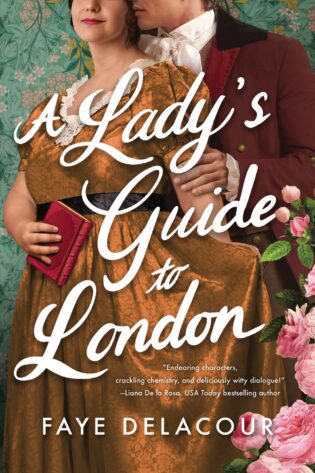
An enemies-to-lovers historical romantic comedy between a grumpy Viscount with a rocky reputation and a bright-as-sunshine heiress determined to make something of herself, perfect for fans of Evie Dunmore, India Holton and Bridgerton.
If he won’t add her business into his guidebook, she’ll make him an offer he can’t refuse.
Della Danby is determined to prove she’s more than just a flighty heiress riding on her parents’ money to get through life. When her closest friend and business partner finds her hands full with a new baby, Della takes the opportunity to shoulder more responsibility at their ladies’ gambling club and secure their financial stability, and she has the perfect to drum up new business by adding their club to a popular guidebook of local attractions.
Gambling ruined Viscount Lyman Ashton’s life and his marriage. He has no intention of putting a new club in his guide, nor of getting involved with its intriguing and energetic proprietress. But when Della refuses to take no for an answer and approaches his publisher with a plan to write her own book of attractions for ladies, Lyman reluctantly agrees to collaborate with her in exchange for the money he so desperately needs to pay his debts. As they grow closer, Lyman finds himself falling for Della even though his past could jeopardize her reputation. But if they can ever have a future together, Della may have to choose between the club she’s worked so hard to build and her chance at love.
My thoughts:
A Lady’s Guide to London presents a unique premise within the historical romance genre, and as someone who enjoyed the first book in this series, I was eager to delve into Faye Delacour’s latest work. Regrettably, Della’s story failed to captivate me, and finishing the book became a chore.
My disappointment stems not from any single, critical flaw, but from an accumulation of smaller issues. Primarily, the characters fell flat. The fun and vibrant Della from the first book was largely absent here; the weight of her responsibilities at the gaming club seemed to have extinguished her spark. Compounding this was Lyman, whose past mistakes rendered him judgmental and self-righteous. His blanket disapproval of any form of entertainment, like drinking or gambling, cast a pall over the narrative and further dimmed Della’s remaining light, causing her to question her own life choices.
The plot suffered from a noticeable lack of direction for much of the story, resulting in uneven pacing. A significant conflict was absent until the midway point, leaving the first half feeling aimless and slow. While the beginning dragged, the ending felt abrupt and unsatisfying, leaving me both bored for long stretches and curiously unfulfilled at the conclusion.
Despite these criticisms, the novel deserves credit for its unconventional elements. While not explicitly stated, Della’s internal monologue strongly suggested a portrayal of ADHD, which I found relatable and a refreshing inclusion in a historical setting. Furthermore, the concept of a female-owned gaming club remains a highlight. Delacour excels at depicting the business’s intricacies, both its triumphs and struggles, and this aspect was even more engaging here than in the previous book—a promising sign for the series’ future.
Overall, while A Lady’s Guide to London offers a fresh perspective in historical romance, its flaws were too significant for my personal enjoyment. The romance felt lackluster, the characters were often frustrating, and the narrative failed to maintain my interest. It is not a poorly written book, but it has confirmed that Faye Delacour’s style may not be for me.
